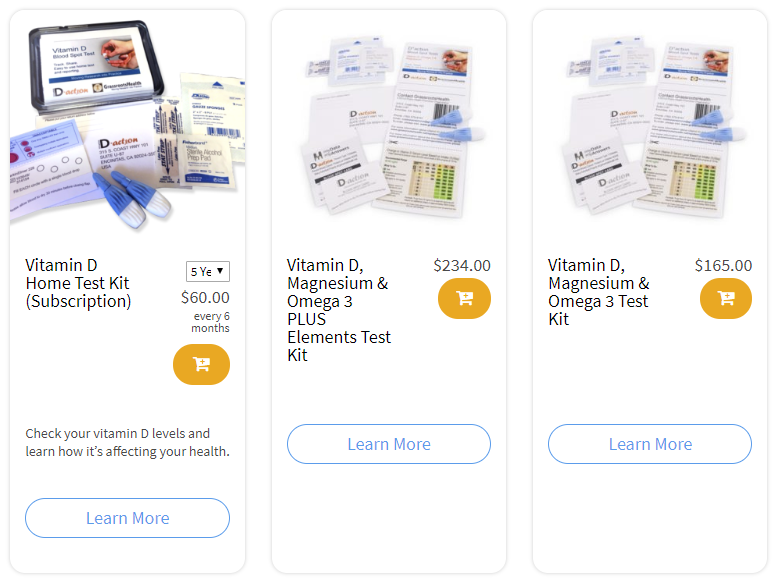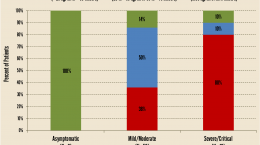Published on August 3, 2020
 GrassrootsHealth was founded to get the message out that vitamin D levels matter… beginning with a consensus statement from over 40 vitamin D scientists from around the world recommending an optimal target of 40-60 ng/ml (100-150 nmol/L) to prevent disease.
GrassrootsHealth was founded to get the message out that vitamin D levels matter… beginning with a consensus statement from over 40 vitamin D scientists from around the world recommending an optimal target of 40-60 ng/ml (100-150 nmol/L) to prevent disease.
One of the very first graphics created by GrassrootsHealth and our Principle Investigator, Dr. Cedric Garland, was our Disease Incidence Prevention Chart – which looked at publications on the incidence of several different disease conditions, and clearly illustrated the difference in disease outcome based on varying vitamin D levels.
Dr. Robert Heaney also presented on the importance of understanding system-specific nutrient responses, emphasizing the multi-functional purpose of nutrients within human physiology. A perfect example with vitamin D is a comparison between its role in bone physiology and its role in pregnancy. It is well known that 99% of rickets is eliminated with a vitamin D level of at least 20 ng/ml, meanwhile, multiple studies show the increased demand for vitamin D during pregnancy, with outcomes such as a 60% decrease in preterm birth rates for those women who reach 40 ng/ml during pregnancy compared to women with levels below 20 ng/ml. Understanding that a different minimum threshold vitamin D level may be necessary for different systems within the body is essential, especially when optimization of function is a desired outcome.
The Immune System Relies on Vitamin D for Optimal Function
Vitamin D has many roles within immune system function. Without a certain amount of vitamin D available, different parts of the immune reaction will be hindered. Several studies have emerged during the COVID-19 pandemic showing a significant association between low vitamin D levels and an increased risk of COVID-19 infection and severity. We recently reviewed a study by Maghbooli et al that found much better outcomes among individuals with vitamin D levels over 30 ng/ml (75 nmol/L). The data was further analyzed based on vitamin D levels of at least 40 ng/ml, and while there were not enough patients for a full analysis based on this classification, they found that of those over 40 years old with vitamin D blood levels less than 30 ng/ml, 20% died from COVID-19, whereas those with levels of at least 30 ng/ml, 9.7% died, and those with levels of at least 40 ng/ml, only 6.3% died.
Findings from a Population Study in Israel
Merzon et al. examined data from individuals in Israel who were tested for COVID-19 infection between February 1st and April 30th of 2020 to see if there was an association between low vitamin D levels and the risk of COVID-19 infection and hospitalization. Out of 7,807 individuals with data on vitamin D levels and COVID status, a total of 782 tested positive for COVID-19 and 7,025 tested negative.
As illustrated in the chart above, the data showed an almost 60% increased risk in COVID-19 infection for individuals whose vitamin D level was below 30 ng/ml (75 nmol/L) compared to individuals whose vitamin D level was 30 ng/ml or higher. The analysis also found that among the COVID-19 positive individuals, there was an almost doubled risk of hospitalization for those whose vitamin D levels were below 30 ng/ml.
Your Vitamin D Level Matters! Test yours today
Ensure your vitamin D and other nutrient levels are within range! Help support a healthy immune system and more by testing today to find out your level of vitamin D and other nutrients important for a healthy immune response.
Are You Getting Enough Vitamin D to Help Yourself?
We’re in a time of great crisis that could be greatly affected by making sure you and everyone you know has a serum level of at least 40 ng/ml. Help us help you.
Do you know what your vitamin D level is? Be sure to test today to find out, and take steps to keep it within a target of 40-60 ng/ml or 100-150 nmol/L! Give your immune system the nutrients it needs to support a healthy you and protect yourself from unnecessary diseases.
GrassrootsHealth Nutrient Research Institute is preparing to do a Community RCT with the use of our myData-myAnswers nutrient health system that over 15,000 people are already using for their health. We will demonstrate how one can use the Nutrient Research Model established by Dr. Robert Heaney to establish the effect of vitamin D serum levels of at least 40 ng/ml (100 nmol/L) on risk reduction with different ethnicities in the population. Please let us know if you’re interested in helping sponsor this project.
CLICK HERE for updates and new information about the project.
Through GrassrootsHealth Nutrient Research Institute, you can also test your essential elements magnesium, copper, zinc and selenium, toxins such as lead, mercury and cadmium, as well as your omega-3 levels, inflammation levels and thyroid stimulating hormone (TSH) level. Find out your levels today! Log on to the test selection page (click the link below) to get your tests and see for yourself if your levels can be improved.
Make sure you track your results before and after, about every 6 months!
Click Here to Access the Test Page
How can I track my nutrient intake and levels over time?
To help you track your supplement use and nutrient levels, GrassrootsHealth has created the Personal Health Nutrient Decision System called
For each specific supplement, you can track what days you take it, how much, and many other details. This will help you know your true supplemental intake and what patterns of use work for you to reach and maintain optimum nutrient levels. Check it out today!









